700X Naval Air Squadron headed out for a week of trials on board HMS Mersey, say the Royal Navy.
According to the Royal Navy, 700X Naval Air Squadron have been working hard over the past few months to trial unmanned equipment and its suitability for future operations.
“Based at Royal Naval Air Station Culdrose, 700X has taken to the sea in the latest step of its pioneering adventure into remotely-piloted air systems. They headed out for a week of trials on board the fishery protection ship HMS Mersey. To help the squadron get to grips with remotely-piloted aviation, they spent time in the USA. In Huntsville, Alabama, they received training on the Puma and Wasp air systems and learned how to operate the aircraft in various scenarios.”

700X commanding officer Lieutenant Commander Justin Matthews said:
“These remotely-piloted systems can act as an extension to a ship’s suite of sensors and potentially as a weapon delivery platform. We’ve set up this new flight to test that concept as a capability. We want to be able to demonstrate how you could take any generic UAV, fly it from a ship, and get its information back in a meaningful way. Although we continue to work with industry, this is about the Royal Navy flying a Royal Navy UAV from a Royal Navy ship. That is a fabulously exciting concept.“
It is understood that the team are using an existing air system known as Puma, which can be launched and recovered from ships. 700X will also be taking systems on exercise to Norway soon, say the Royal Navy.
You can read more about this from the Royal Navy themselves here.



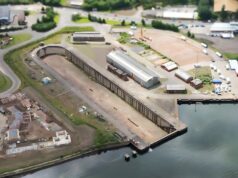
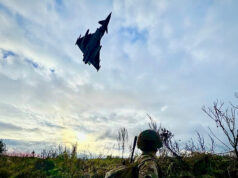
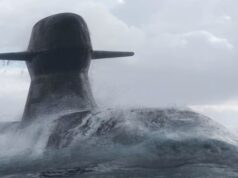


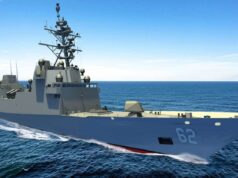
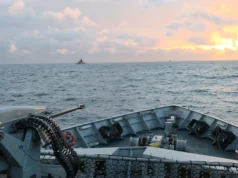

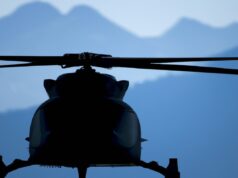
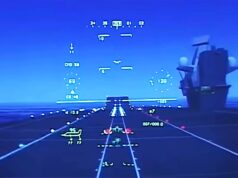

I would have thought paraglider based sensors would have provided a good way forward airborne sensor. Whilst they can cover the distance of even a small UAV they would be more persistent and could achieve high altitudes with heavier payloads.
Sorry…. Whilst they can’t cover the distance of even a small UAV
Need to build capability in this area.
It seems like trials have been going on for years.
Scan Eagle for example was years ago now.
When will the MoD actually order something and get it into service, or are the systems still not mature?
Wouldn’t be surprised if a combination of both. MOD have certainly been bitten in the past so may be being cautious till really confident in a technology, or there just being tight?
Its definitely coming – lots of unmanned/optionally manned trials and experimental kit ordered or underway right now, air, surface, subsea, MCM and ground. I think rather than randomly ordering a lot of off the shelf systems – and perhaps after the Watchkeeper fiasco – they are developing the concepts of operation, tactical and systems integration requirements before specifying hardware. Probably see a lot of references to this in the upcoming defence and foreign relations review.
Makes sense James. I mean that photo above looks like a toy compared to some of the systems already out there.
I have to admit, for a maritime application I don’t really see a better option for a fleet UAV than a rotary wing platform with decent over the horizon legs and payload. I know that’s in a different league to Scan Eagle and others, but I don’t really see them contribute a whole lot to the RN’s various missions. I’d be very happy to hear a counter argument, mind you, I don’t know much about the UAV side of things at all.
To me, the fact that they haven’t for one of these suggests that unmanned systems aren’t enough of a priority for the RN to put decent money into. I don’t blame them, they’d be a great force multiplier, but I think the pots that the RN has put their money into are actually pretty wise at the moment. Their move into unmanned mine clearance is a good one, in that it isn’t hugely expensive, but develops unmanned operations expertise. Maybe in a few years, I think Leonardo have some unmanned choppers that they could potentially build in Dorset, and the Firescout is now operational as far as I’m aware?
As far as more generally using a lightweight UAV like Scan Eagle across the MOD, I really haven’t a clue! I thought the army used something in Afghanistan?
Desert Hawk, and others. I had in mind the RN with my rant.
As often happens with my conversations with you, I went down a bit of a rabbit hole yesterday evening. First off, I retrat some of what I said about small fixed wing UAVs like Scan Eagle, they’re pretty cool. Also, turns out the RN had been operating Scan Eagle in the Gulf up until 2017. Not clear on why they retired it, but it was apparently somewhat obselete at that point. The Unmanned Warrior exercise was supposed to identify a replacement, but so far nothing has been anounced so the capability is gapped as far as I can work out. Having something like Scan Eagle would probably have been really valuable during the Iranian tanker mess last year.
Apparently the most recent versions of Scan Eagle (which did go to Unmanned Warrior) have options that the Australians use for wide area maritime search and track, which is pretty cool. Whether that or something else (Leonardo have an MOD contract for developing some kind of rotary wing UAV for potential construction in the UK) ends up getting picked, we’ll have to wait and see.
https://www.defensenews.com/home/2016/07/19/british-navy-plans-to-let-scaneagle-drone-go-next-year/
Morning Joel
I just wish the MOD would stop arsing around and get something into service in numbers.
From your post you know much more than me on this particular issue so it made interesting reading, thank you.
Haha, only since last night..! I’m one of those research types- don’t buy anything until I’ve gone through all the review sites online and all that.
I always learn a lot from you with regards your knowledge of our current force structure and what it all means. That’s one of the beauties of a decent comments section, you learn as much as from the article itself.
Cheers mate. Research is good, even though it still sometimes does not give you the answers!
Delay potentially owing to a balancing act of payload between sensor capability and secure data link back to the ship? Such data link equipment allowance could be surprisingly weighty so settling on the right platform could be tricky. Then how easy is that platform to operate and under what conditions.
Talk about over thinking a capability just buy some already it’s not like there the most expensive items.
This has been dragging on for years meanwhile some countries are their 2nd or 3rd generation of UAVs.
Then of all the great UAVs around they test the one that looks like an overgrown model aeroplane!
This is what I meant! For example FireScout. Put it on River B2 for example?
Morning Daniele. A capable drone on the River B2’s would certainly solve the lack of hangar issue and greatly enhance their utility in the broad surveillance role.
Uncomfortably hot as hell in Durbs at present!
Cheers
Morning Geoff.
Frosty but sunny in Surrey! And my garden is coming to life. 🙂
Oh to be in England now that Spring is(not quite) there…
All this UAV \ USV and “related types” testing is just dragging on too long.
In fact, it is embarrassing !!.
Still faffing about with watchkeeper, scan eagle, others and now MANTAS) T12 USVs.
We always drag our feet. Get on with it ;P
Concerning MANTAS, looks useful. And I wonder if we are beyond testing with that, considering the RN is getting two and the JFC 3. To me, JFC of course means DSF and the SBS.
Useful in the fisheries role. Also, it seems UK is increasing the fisheries squadron.
https://www.telegraph.co.uk/politics/2020/02/05/britain-boosts-fishing-patrol-force-battle-brussels-looms-eu/
Not sure I understand the push expressed in some comments to just get on and spend money on something, especially in budget constrained times. What urgent requirement or problem drives this? There are many different aerial drone solutions, fixed wing and rotary, large and small; it seems only logical to determine just what capabilities are needed and how best to exploit them, something emphasised at the end of the article; especially in an evolving/developing market. We certainly don’t want a repeat of Watchkeeper.
As an example of different strokes for different folks, the govt in the form of Under Secretary for Defence Procurement commented in the recent Defence: Rotary Strategy debate that £250,000 has been spent with Malloy Aeronautics for development of a tethered rotary drone for the RN. Malloy already produce the T-150 as a free flying craft with 69kg payload. Now speculatively consider an aircraft, perhaps larger and primarily powered through the cable for indefinite endurance, with enough lift/energy for both maintaining significant altitude whilst also powering a 360 degree radar capability to significantly push out the radar horizon for earlier detection of sea skimming missiles and surface vessels, perhaps using Leonardo’s Osprey radar as an example.
We do need some kind of AEW platform for the carriers so that could be something to consider.
I agree that we shouldn’t just get drones for the sake of it; our budget is constrained and we need a measured approach to solving problems.
Such as aerial refuelling of our F35Bs, which do have shorter range than their C-variant cousins. Some have suggested a drone or V22 for aerial refuelling; I wonder if conformal fuel tanks wouldn’t be a cheaper option to extend their range.
It would be interesting to know if the fixed wing drone being developed by the US to provide in-flight refueling of their F35s Could operate from the QE class, or would it require cat and traps?
I thing the Israelis are developing conformal fuel tanks for the F35.
Yeah i read that somewhere too. We should be joining them on this, spread the cost.
Someone tell me if I’m wrong but as I see it, conformal fuel tanks would not only significantly extend our F35Bs’ range but would be a much cheaper option than the process of searching for a viable mid air refuelling aircraft that can take off and land from our carriers, then either purchasing one or developing our own, at the probable cost of hundreds of millions to get maybe a dozen aircraft, used for a single purpose. Which then also require regular maintenance like the F35s they will be refuelling, plus training a pilot to remote-fly it, or developing them as autonomous. All of which costing money.
Far cheaper to pay a few million alongside the Israelis or others to get conformal fuel tanks, which once we have them, we have them. Maintenance costs would be minimal.
I am curious to see what the tethered drone is used for. I could see it being used less with a CSG than with ships which do not have an AEW capability, say an amphibious op with no carrier support. A CSG with Crowsnest is likely to see much farther because the Merlin can attain much higher altitude. However, a tethered drone could be a very inexpensive backup as well as enabling proliferation of low cost AEW across the fleet, with benefits for anti-piracy, drug running and fishery patrol ops in the absence of a helicopter.
Drone technology is all well and good where you have clear open skies. But as the Germans found with their Global Hawk and we with the Watchkeeper. Trying to operate them in congested airspace is a nightmare. About a quarter of the Watchkeeper budget has been spent on trying to solve traffic avoidance problem.
You would think its relatively simple. Fit a traffic avoidance system (TAS) to the drone letting other aircraft know where you are. Feed the collision data through the satellite feed to the ground station. Then the pilot moves the aircraft out of the way. The problem here is the delay, from when the TAS detects a nearby aircraft to the pilot controlling the drone out of the way. Due to this issue the Watchkeeper program have tried to implement some artificial intelligence into the loop to allow the drone to take the avoiding action. This has taken time as you have to tap into the drones flight control system, its inertia measurement system and its GPS.
This is one of the reasons we do not fly Reaper or Protector within the UK. To fit an intelligent TAS would significantly ramp up the costs and put further delays in to getting it.
I thought Protector was intended to be certifiable to fly in European civilian airspace?
I believe that was the requirement, but it has yet to be cleared by the CAA. When they flew the Protector over from the States for last years RIAT, it was escorted in by a Typhoon, which picked it up south of Ireland.
Thanks for clarification.
“We want to be able to demonstrate how you could take any generic UAV, fly it from a ship…”
Am I missing something here? Probably. How do they launch and recover a UAV at sea?
To be facetious … carefully! To be more helpful. For fixed wing hand launch for small UAV such as that shown above, catapult for larger versions. Recovery is less elegant with skyhook, nets or similar. The rather brutal recovery would suggest limits on size for fixed wing unless off a carrier. YT shows fixed wind launch and recovery below. Rotary is a little more elegant.
https://www.youtube.com/watch?v=J4uJ4yShEDA
Thanks, GHF. I thought there might be some sort of catapult launch but uncertain about recovery. Looks a bit Heath Robinson but appears to work, in the end. I would think recovery in heavy seas would be a real challenge, particularly from the heli deck of a FF or DD, with limited space and the prospect of all the antenae that could be destroyed if they miss the hook! However, nothing ventured, nothing gained…
Still think the RN would be better served with Scheibel S100 mini-copter UAV. It can carry a useful payload and has a 6 hour endurance. It might be too big for the minesweepers, but it can be equipped with better sensors than the smaller UAVS.
It seems the officer’s comment at the end of the article, taken from the slightly more detailed linked RN article, is stressing a RN rather than platform focused program that is exploring concepts of operation for which any UAV would do for now. When the RN know what tasks they want UAVs to address then that would presumably determine the most appropriate solution(s).